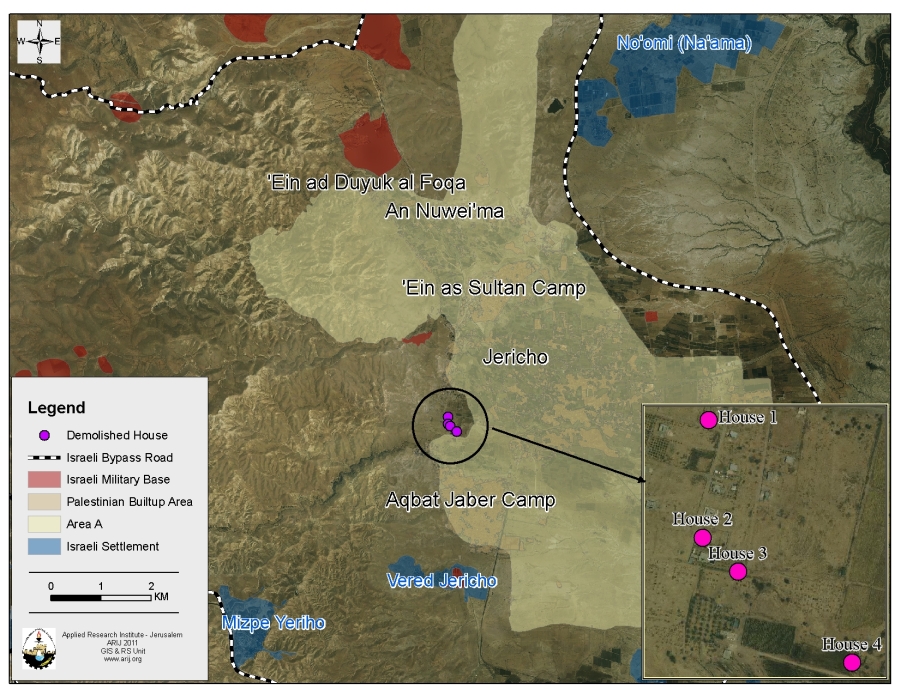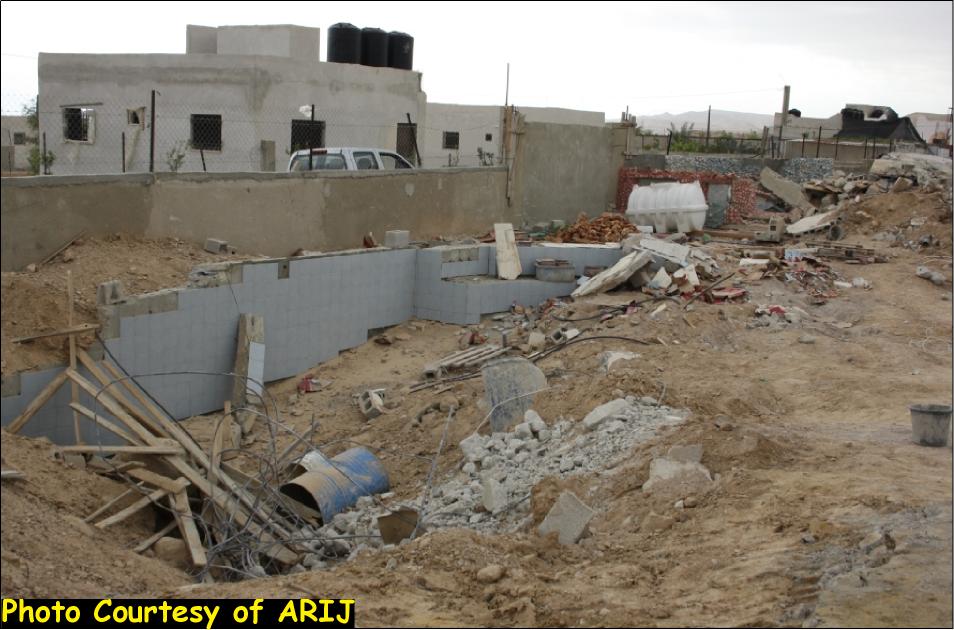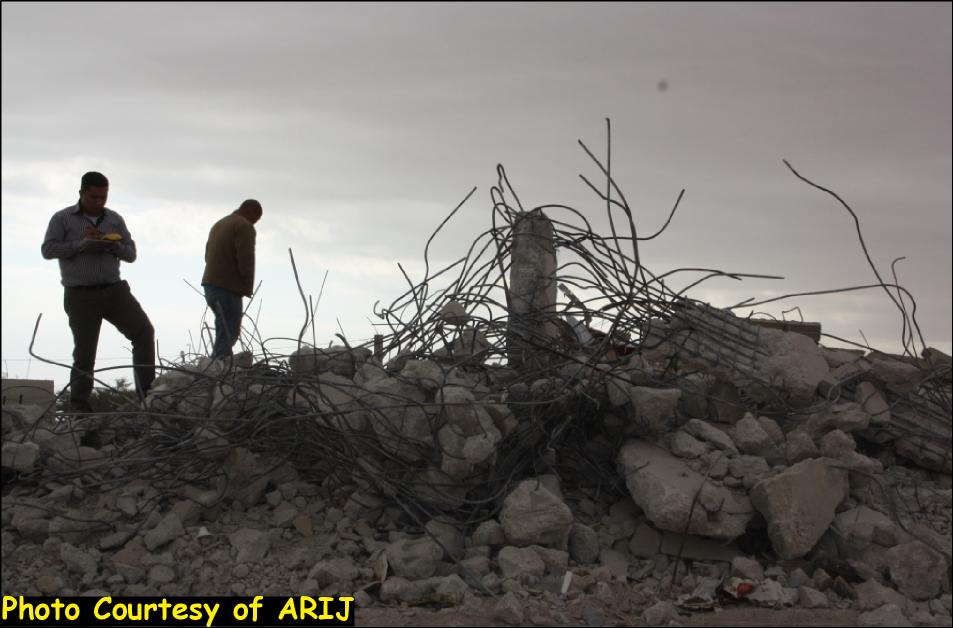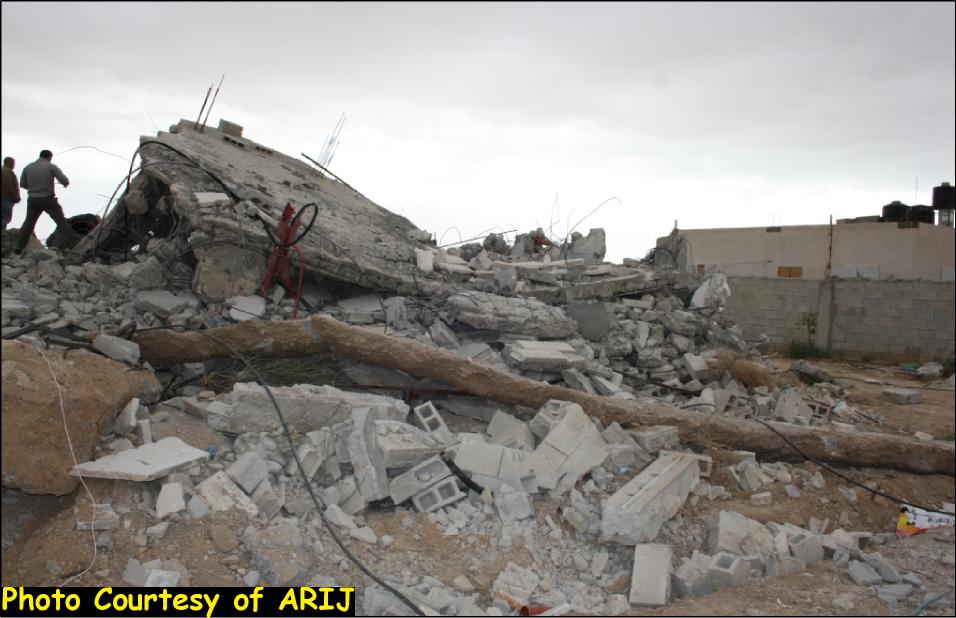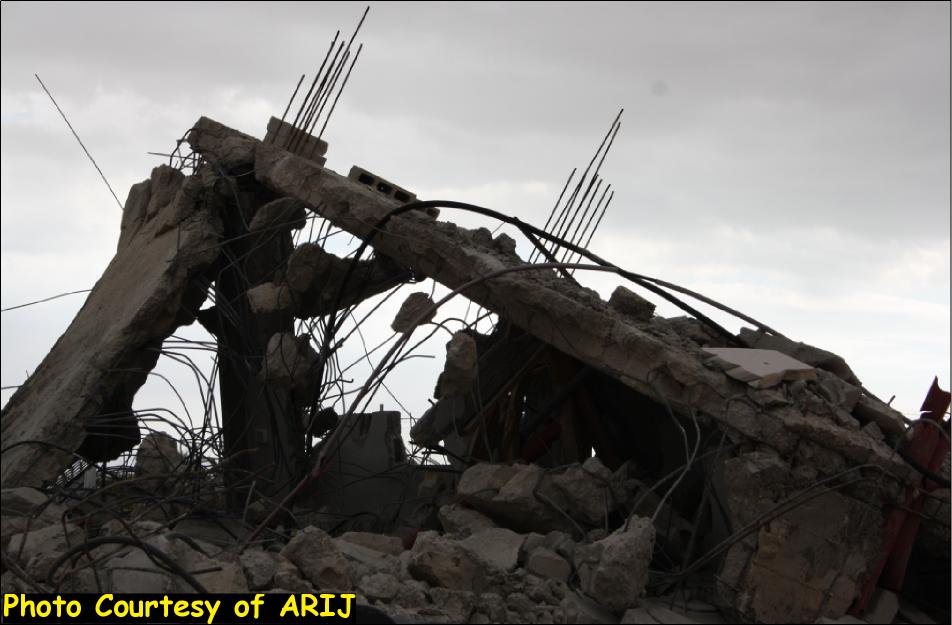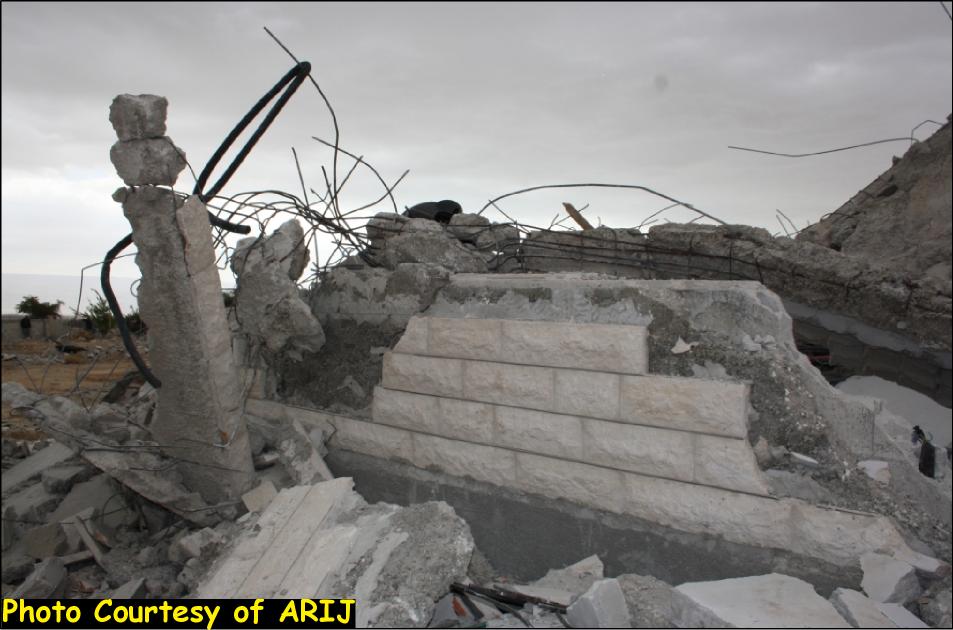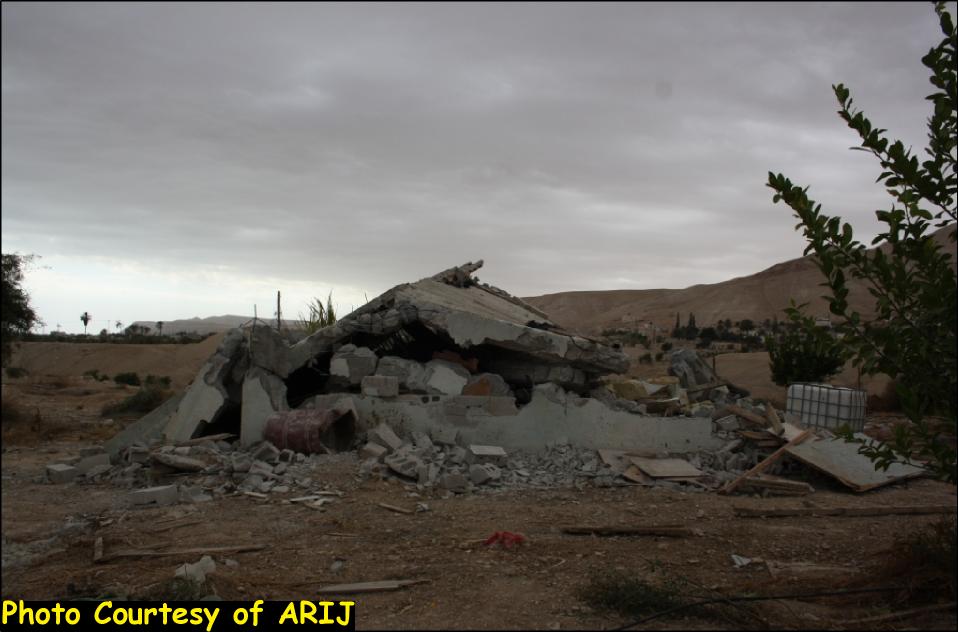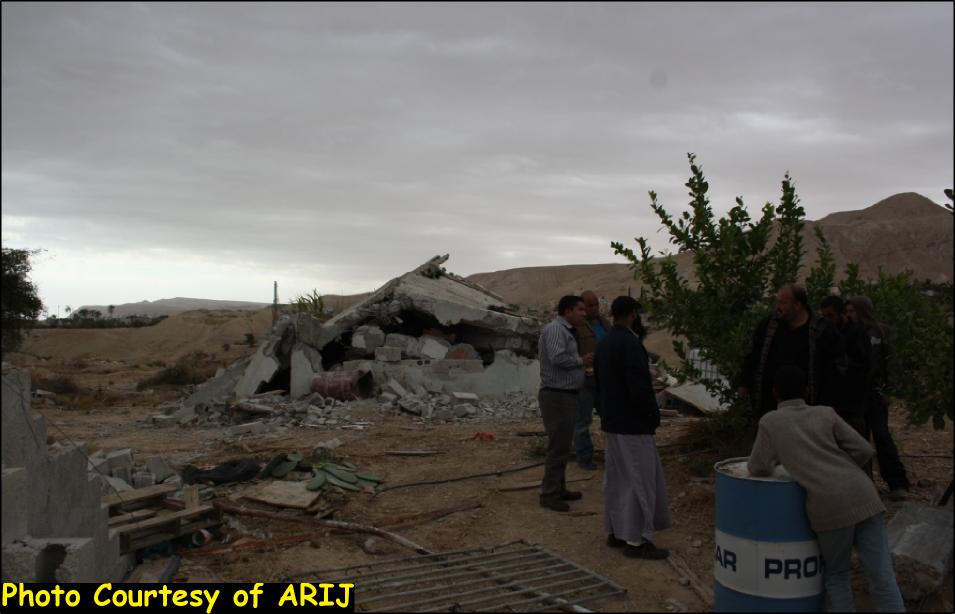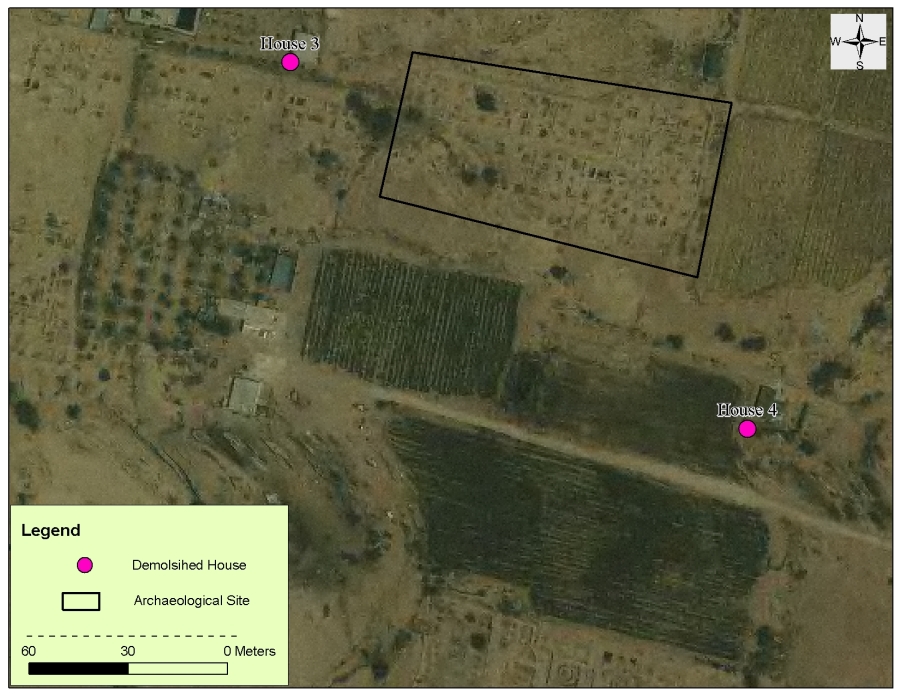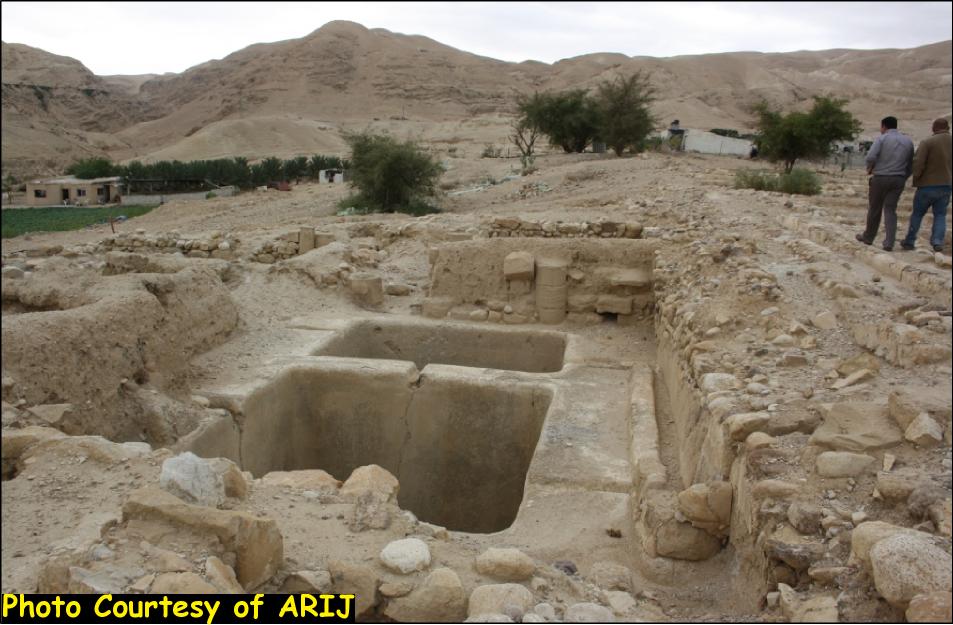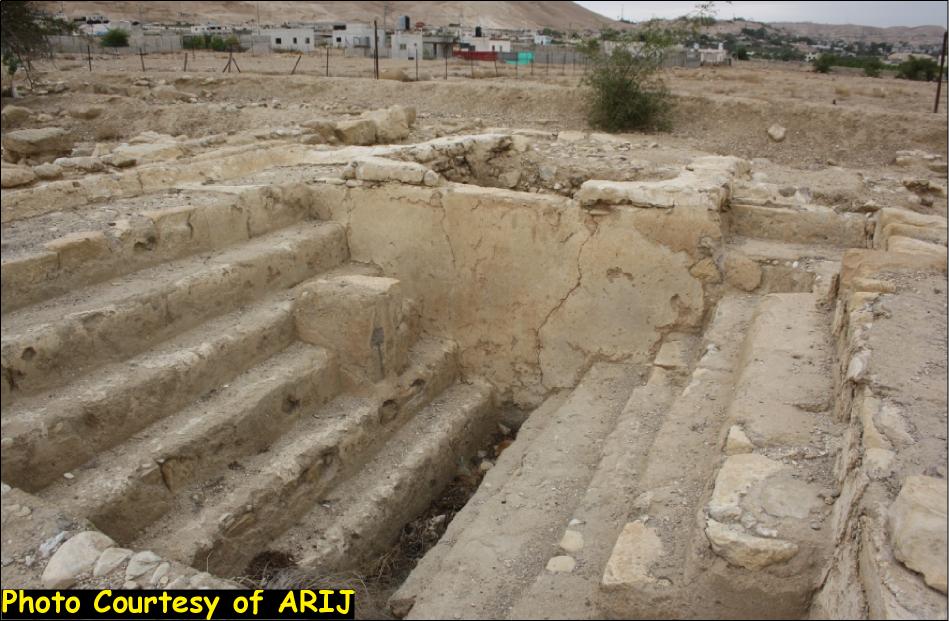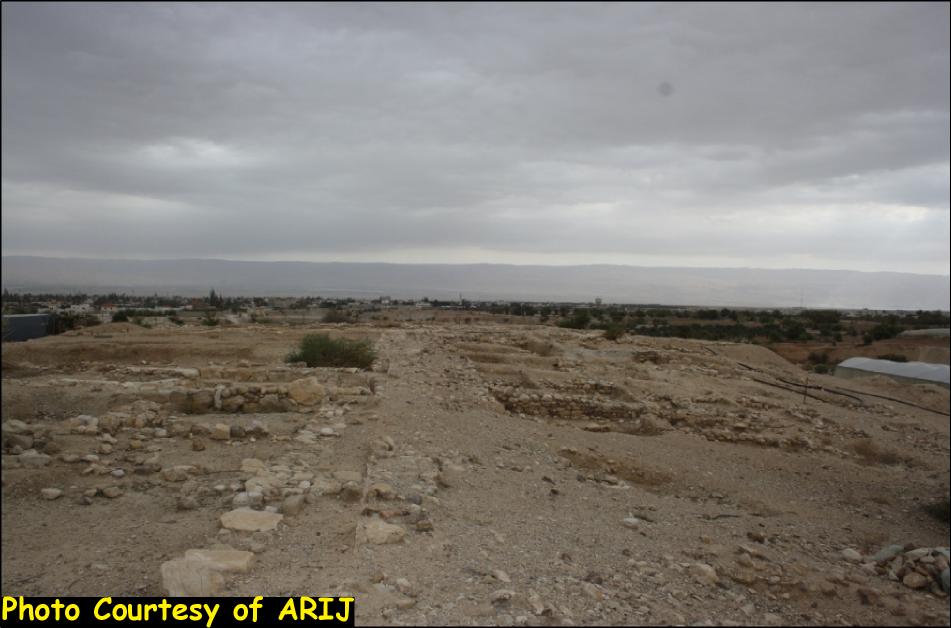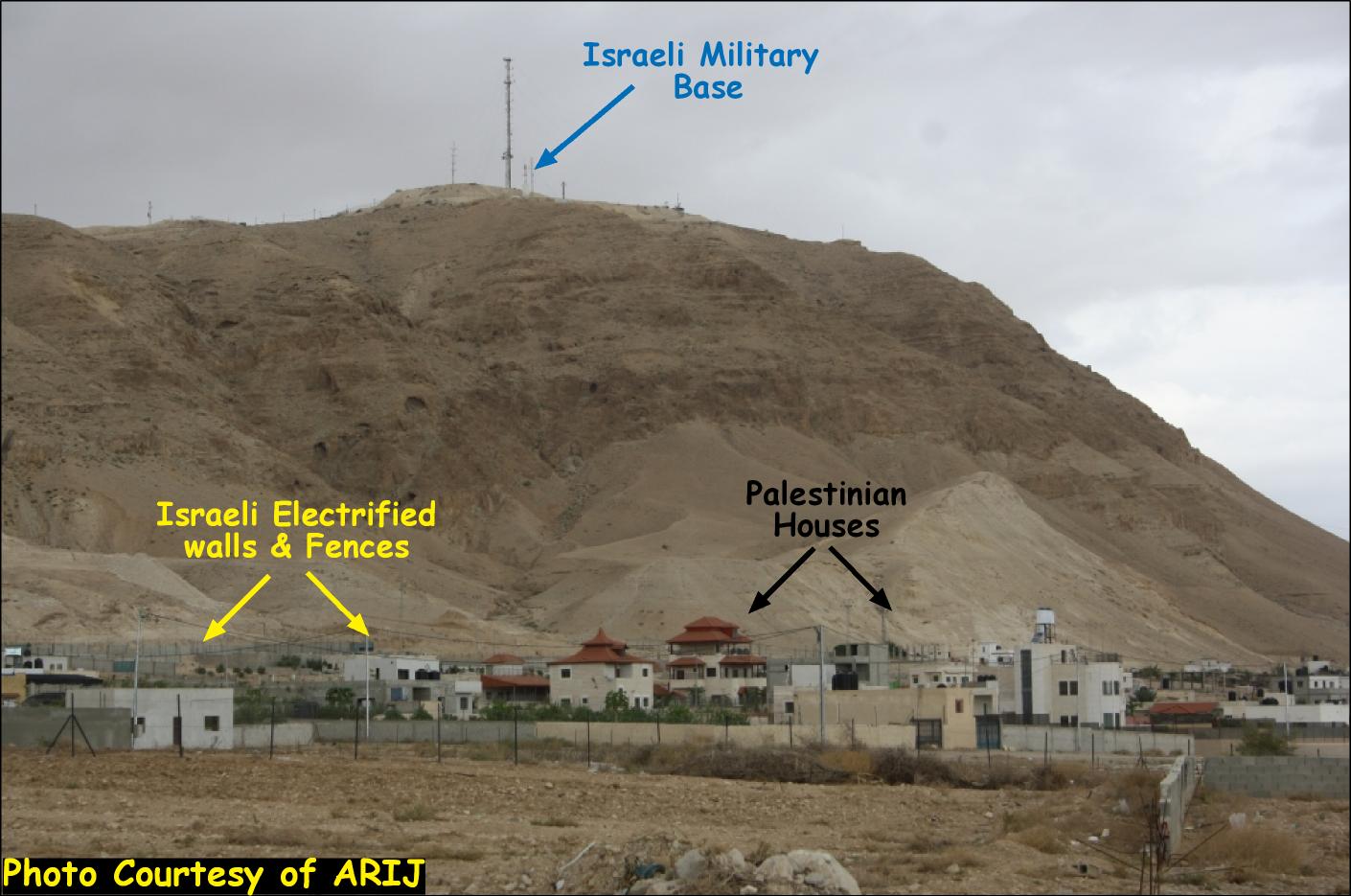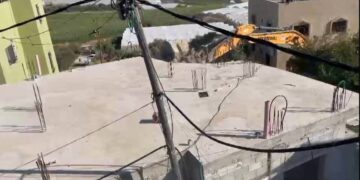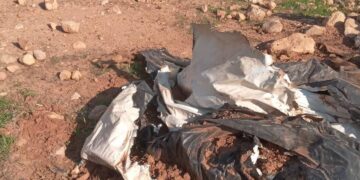Under the protection of more than 30 Israeli Army Vehicles and 100 Israeli Soldiers, the Israeli Civil Administration accompanied with two occupation dozers raided on the 15th of November 2011, Sbieh neighborhood in Al-Dyouk Al-Tahta Village, in Jericho Governorate and demolished 4 Palestinian houses in the village and a retaining wall under the pretext of being built without a building permit. Table 1 gives details of the demolished houses in Al-Dyouk Al-Tahta Village, in Jericho Governorate.
|
Table 1: The demolished houses in Al-Dyouk Al-Tahta Village, in Jericho Governorate.
|
|
No.
|
Owner
|
Type of Facility
|
Total Area
|
Population
(2011)
|
Built in
|
|
1.
|
Ammar Al Fakhouri
|
Residential house
|
200 m²
|
5 people
|
11/2009
|
|
2.
|
Ammar Al Fakhouri
|
Swimming pool
|
66 m²
|
–
|
11/2009
|
|
3.
|
Ammar Al Fakhouri
|
Retaining wall
|
20 m²
|
–
|
11/2009
|
|
4.
|
Misbah Ali Mttour
|
Residential house
|
100 m²
|
7 people
|
03/2008
|
|
5.
|
Yousef Ali Al-Zallam
|
Residential house
|
100 m²
|
5 people
|
10/2007
|
|
6.
|
Muammad Al-Shiekh Ali Al-Thouli
|
Residential house
|
170 m²
|
6 people
|
10/2010
|
|
7.
|
Muhammad Sistawi
|
Retaining wall
|
600 m²
|
14 people
|
07/2011
|
|
8.
|
Total
|
—
|
1256 m²
|
37 people
|
—
|
|
Source: (1)ARIJ Field Workers / 2011
(2) Head of Al-Dyouk Al-Tahta village Council
|
Furthermore, the Israeli Civil Administration was about to demolish a fifth house owned by Majid Atawneh., but Mr. Atawnehouse went up on the roof of his house along with his family, and settled there, choosing to be buried under the ruins of his home, rather than see his house demolished.
The area where the demolitions occurred is classified as Area C, where Israel retains full control, administrative and security, over the area and therefore Palestinians living in this area, are asked to issue a building permit for any building/construction they’re to add. See Map 1 for more information.
Map 1: Location of the demolished houses in Al-Dyouk Al-Tahta village
Photos 1-9: the demolished properties in Al-Dyouk Al-Tahta Village
Photos 10-15: More photos of the demolished properties in Al-Dyouk Al-Tahta Village
In another incident and related to the demolition that took place in the targeted area, five Jewish Rabbis accompanied with 3 Israeli military Jeeps and the Israeli Civil Administration came to the area before 15 days from the demolition date and settled in the archeological site ‘Herod the Great’ located in the area of the demolition. The Rabbis stayed there for 5 hours and demanded to excavate for monuments and remnants of their Jewish Ancestors in the archeological site as claimed. Head of Al Dyouk Al Tahta Village council, Suleiman Younis Fheidat stated that the area that the Rabbis invaded is a Palestinian area, and that he has all the documents to prove so; moreover, Mr. Fheidat showed the classification Code of the land, Bloc #6 – Otol Al-Dyouk – Parcel #1 – Jordanian Classification.
Map 2: the location of the archeological site in Al-Dyouk Al-Tahta village
Photos 16-19: the archeological site in Dyouk Al Tahta Village
Previous Israeli attacks on the Village of Al Dyouk Al Tahta
The village of Al-Dyouk Al-Tahtahas been extensively raided during the last couple of years by the Israeli civil Administration and the Israeli Occupation army and most especially in the last 6 months. These raids and attacks were for giving out demolition orders and halt-of–Construction notifications which amounted already to 30 demolition orders and two third of thevillage’s houses are notified with halt-of-construction, all under the pretext of not being authorized to build in area C and not having the recommended papers and license to build from the Israeli civil Administration.
Furthermore, the Israeli Civil Administration is nowadays using a new policy to alert people with demolition as stated by villagers of Al-Dyouk Al-Tahta; Officers of the Israeli Civil Administration gave alerts to Palestinian owners, and took images of the alerted properties from every angle, and sent them under coded files to the Israeli Civil Administration Central Headquarters in Beit El – Ramallah. The people who were the first to undergo such a new policy are:
1. Abd Al-Aziz Al-Shwieki
2. Mansour Abu Wahdan
3. Imad Al-Ramouni
4. Samer Al-Tawyil
Al-Dyouk Village Profile & Geopolitical Status
Al-Dyouk Village is located to the northwest of Jericho city, with a total distance of 8 Km. The village is bordered by Ein Al-Dyouk Al-Fouqa, An Nuwei’ma and Deir Qruntol (Qruntol Monastery) from the north, Deir Al Qalt (Al Qalt Monastery) and Aqbat Jaber refugee camp and the settlement of Vered Yericho from the south, Jericho city from the east and four Israeli military bases from the west.
The village of Al-Dyouk has a total land Area of 59,464 dunums, including 4470 dunums form the built-up area. The lands of Al-Dyouk village are classified into Areas B & C according to Oslo II Interim Agreement of 1995, where 28,221 dunums (47.5% of the total village area) are classified as ‘Area B’, and 31,242 dunums (52.5% of the village’s total area) are classified as ‘Area C’, including 103 dunums occupied by Israeli military bases, and 29 dunums are classified as mined fields and dumping sites. Photo 20 below shows some of the Israeli military bases, walls and fences in Al-Dyouk Village, in Jericho Governorate. See Photo 20
Photo 20: some of the Israeli military bases, walls and fences in Al-Dyouk Village
Conclusion
It is worth mentioning that what the Israeli Occupation army and Civil Administration are carrying out in the Occupied Palestinian territory is illegal, and tragically violates International Laws & Human Rights conventions. Furthermore, Israel by such actions, is neglecting all the voices calling for halting the demolition campaign carried out against Palestinian houses and properties and condemning it.
The Fourth Geneva ConventionArticle 53: ‘Any destruction by the Occupying Power of real or personal property belonging individually or collectively to private persons, or to the State, or to other public authorities, or to social or cooperative organizations, is prohibited, except where such destruction is rendered absolutely necessary by military operations.’
- Article 47: ‘Protected persons who are in occupied territory shall not be deprived, in any case or in any manner whatsoever, of the benefits of the present Convention by any change introduced as the result of the occupation of a territory, into the institutions or government of the said territory, nor by any agreement concluded between the authorities of the occupied territory and the Occupying power, nor by any annexation by the latter of the whole or part of the occupied territory.’
- Article 147: ‘Grave breaches to which the preceding Article relates shall be those involving any of the following acts … extensive destruction and appropriation of property, not justified by military necessity and carried out unlawfully and wantonly.’
Universal declaration of human rights, Article 17:
1. ‘Everyone has the right to own property alone as well as in association with others.’
2. ‘No one shall be arbitrarily deprived of his property.’
1. ‘Everyone has the right to a standard of living adequate for the health and well-being of himself and of his family, including food, clothing, housing and medical care and necessary social services, and the right to security in the event of unemployment, sickness, disability, widowhood, old age or other lack of livelihood in circumstances beyond his control.’
Hague Regulations 1907
Section II Article 23: ‘it is especially forbidden- to destroy or seize the enemy’s property, unless such destruction or seizure be imperatively demanded by the necessities of war.’
- Section III Article 46: ‘Family honor and rights, the lives of persons, and private property, as well as religious convictions and practice must be respected. Private property cannot be confiscated.’
:::::::::::::::__
[1] Convention (IV) relative to the Protection of Civilian Persons in Time of War. Geneva, 12 August 1949.
http://www.icrc.org/ihl.nsf/full/380
[2] Universal declaration of human rights
http://www.un.org/en/documents/udhr/
[3] Universal declaration of human rights
http://www.un.org/en/documents/udhr/
[4] Convention (IV) respecting the Laws and Customs of War on Land and its annex: Regulations concerning the Laws and Customs of War on Land. The Hague, 18 October 1907.
Prepared by:



